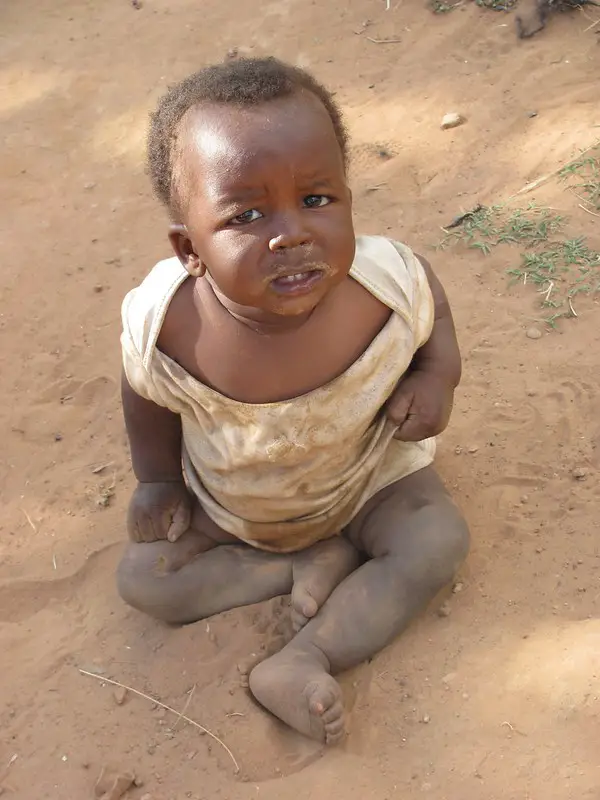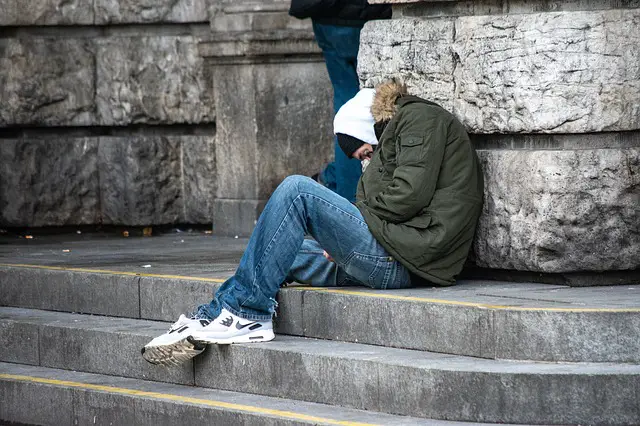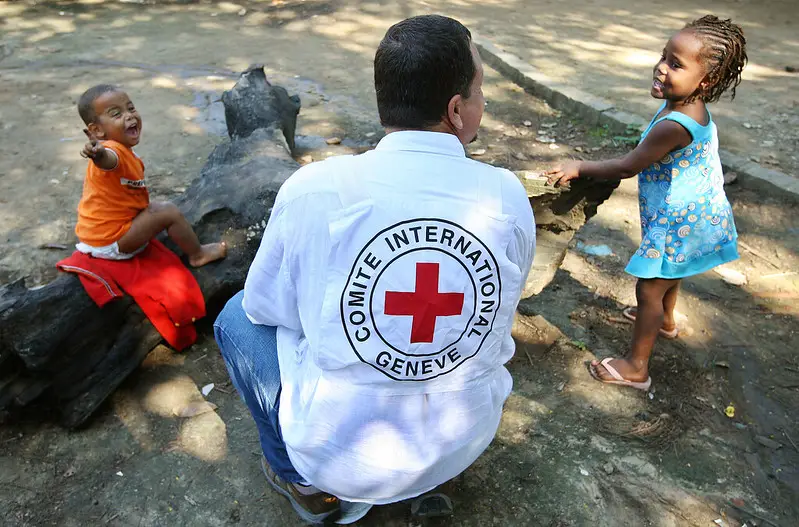During the last years of the eighteenth century, when the life expectancy for men was just around 35 years, more than 400,000 people died in Europe as a result of smallpox, a disease that, currently, we don’t need to bother about.
Obviously, a lot of things have changed from that point. All thanks to scientific findings, political notions, and new technology, life has hugely improved for a lot of the world’s population. However, not for all of it. By and large, richer nations profit and poorer nation’s ones suffer.
Therefore, what can be done about this? That’s precisely what this book summary is essentially about.

Chapter 1 – There’s never been a good time to be on earth.
Nowadays, when listening to the news, one gets the notion that things are only getting worse and worse. However, the news never provides the full story. As a matter of fact, instead of getting worse, our health has, averagely, never been better than it is now.
Up until around 250 years ago, the majority of people all over the world lived in poverty. And nowadays, though many things have occurred since then, over a billion people live in absolute poverty, suffering the same awful living circumstances as their ancestors.
However, total well-being – which entails things such as access to health services, higher pay, longer lifespans, happiness, opportunities for education and progress plus the general quality of life – has increased significantly.
For instance; nowadays, a white middle-class girl born in the United States has a life expectancy of above 80 years (with a 50% likelihood of living to 100). Also, she has opportunities for education and better economic opportunities than her parents.

However, regardless of all this, there is still huge inequality in well-being globally. Although people nowadays get more money and enjoy better living standards than ever before, there are still huge inequalities between rich and poor nations.
For example, the health standards in Sierra Leone, are really worse than health standards were in the United States in 1910, where 25% of children died before they reached the age of five. Also, more than 50% of the population of the Democratic Republic of Congo lives on less than a dollar every day.
However, the good news is that these inequalities can cause progress – if they’re used in the appropriate manner. For instance, if the difference between, let’s say, the rate of child mortality in rich and poor nations is well known, poor nations will probably attempt to use the innovations that enable richer countries to increase life expectancy and consequently reduce these inequalities.
Chapter 2 – Our ancestors lived really shorter and unhealthier lives than we do nowadays.
The first set of humans, members of hunter-gatherer groups, lived healthily, but short lives. Members of these nomadic tribes lived up until the age of 40 and used their days searching for food and shelter.
This might look like a difficult way of life; however, that’s not completely true. For example, these tribes relished a well-balanced diet and shared what they discovered with each other. Rather than becoming stuck in dirty villages, they were able to take off before a lack of sanitation made disease to spread, and their diet had very nutritious wild plants and meat that was most likely healthier than what we eat these days.
Then, millennia ago during the Neolithic Revolution, these hunter-gatherers started settling down into an agricultural way of life together with their newly domesticated animals. However, this agricultural change caused a reduction in well-being and a huge increase in mortality caused by the disease.
One would think that settling in villages would have increased our ancestors’ well-being. Nevertheless, a settled life signified less dependency on the seasons and climate, less travel and less competition with the other tribes for food.

However, it turned out that the opposite was correct: settling down really reduced well-being. These cities and villages of our ancestors were dirty – people put their food next to the feces of domesticated animals, and disease spread quickly as new epidemics came in through trade.
Due to that, both quality of life and life expectancy extremely reduced during the Neolithic Revolution. People lived shorter lives and frequently died at a younger age as a result of diseases or terrible famines after droughts.
Chapter 3 – Social, political, economic and scientific changes have swiftly reduced death in the last 250 years.
In the past century only, life expectancy in rich nations such as the United Kingdom has increased by nearly 30 years! How did this occur? The main cause of this incredible increase in life expectancy is a reduction in child mortality.
Until very lately, life was short and child mortality was really high. Still, with advancements in health care and disease prevention, a lot of nations in the world have reduced child mortality down to a rate of just 0.5%! If you think of that, in the past few centuries, nearly a third of every child wouldn’t have reached the age of five, these are huge improvements.
Furthermore, better nutrition, health care, and education entail that the majority of the babies born in rich nations can anticipate living long to see their grandchildren and perhaps even their great-grandchildren – something that might not have been likely in the former few centuries ago.
Another significant determinant in improving health and mortality rates was the dissemination of scientific information and other developments. Improvements such as germ theory, governmental stability, improved sanitation and increased research into disease prevention and treatment have improved health and reduced death rate in a lot of countries.

For instance, during the early nineteenth century, when the city of London improved its sanitation, disease rates immediately reduced as the government could effectively combat the cholera epidemic of 1854 more.
That doesn’t mean that the progress has been totally easy. For instance, the Great Famine of China that happened between the years 1959 and 1961, led to the deaths of about 30 million people. Then, there were 34 million people who died as a result of HIV/AIDS. Also, let’s remember there are children in the world nowadays who still suffer and die as a result of preventable diseases such as cholera, measles or diarrhea.
Chapter 4 – In poorer nations, child mortality still remains high.
In the former chapter, you discovered that there are a lot of simple means to handle the majority of diseases that have afflicted humanity for thousands of years: proper sanitation. Therefore, what is the reason why children in poor nations keep suffering from such high mortality rates?
The understanding that developments in sanitation or the use of cheap, still effective vaccines can assist prevent diseases and infections is accessible throughout the world. Still, in a lot of countries, this understanding isn’t really adopted. However, why is this so?
Frequently, the government basically lacks the urge to implement these strategies, and the local population still remains very uneducated to understand that such easy improvements could help save the lives of their children.
Due to that, children die of curable or easily preventable illnesses such as diarrhea or experience malnutrition for years before eventually dying when their weakened immune system is invaded by a virus.

Complicating this issue is the fact that poor nations usually have little or no health care offered by the government. So, access to advanced medicine is greatly lacking for a lot of people. For example, Zambia and Senegal give a really smaller percentage of their budget to improving their citizens’ health than countries such as the United Kingdom.
Unluckily, there are a lot of undemocratic nations that don’t work in the citizen’s best interest. All too often, quality health care is available just for the people that can pay for it, whereas the majority keep suffering and witness their children die from preventable diseases.
To even make matters worse, a lot of people don’t even know that their government could and need to assist improve their health, having never been educated or taught about their rights as citizens. For example, the Gallup World Poll often surveys citizens on what they see to be the primary problems that their government should concentrate on. Health care ranks really low in these surveys, really far behind things such as job creation.
Chapter 5 – In richer nations, caring for the elderly is a big issue.
Due to our technological innovation and scientific innovations, life expectancy in richer nations has increased to extraordinary heights. But, this increase is starting to steady. We’ve made incredible development in prolonging the lives of children; however, we look to have hit a wall when we talk of means of increasing the lives of the elderly.
Certainly, diseases like cancer continue to be the main cause of death among the elderly. The main existential risks that an elderly person in a rich nation experiences are cardiovascular disease, cancer, and pneumonia.
Instead of dying of diseases and infections, the present elders die from chronic diseases that start to show at 50 years of age and older. Due to this, billions of dollars are being spent in research on cancer treatment, cardiovascular disease, and Alzheimer’s prevention.
However, increasing healthcare costs isn’t essentially the solution to these issues. For instance, in the United States, about 18% of taxed income is used on health care –double as that in any other country. And still, Americans don’t live up to a lot of people in other rich nations.

One of the key medical and social advances of our time has to do with lifestyle choices. For instance, nowadays, people smoke less and live healthier lifestyles than those people that lived in the ’70s and ’80s. Nowadays, people are aware that they could possibly live long, fulfilling lives, and they’re beginning to work hard to reach that point.
Rather than just pumping money into healthcare actions, this money should also be used on better education and improvements to living standards, which would assist in the prevention of illness rather than just treating symptoms as they arise.
Chapter 6 – The actual nature of inequality has transformed gradually.
When we talk of inequality, we regularly just think of the inequality of wealth between the rich and poor within our own society. But, nowadays, we need to begin thinking globally.
It’s indeed true that inequality can be noticed in every country. However, the highest differences are seen between nations.
Before the Enlightenment and the Industrial Revolution, the majorities’ of the countries were on a similar level, and the biggest discrepancy of wealth was seen between poor farmers and the rich aristocrats who had the land the farmers worked.
But, the Enlightenment basically stopped aristocracy and, with the increase of the middle class, these huge disparities started to shrink.
- For some countries, these intellectual and technological revolutions brought abundant wealth; while others were left behind. While the United States and a lot of the European nations enjoy abundant wealth and high standards of living, a lot of African and East Asian nations still strive to survive and develop.
For example, in Africa, the number of poor people truly doubled between the years 1981 and 2008, from 169 million to 303 million.
Neither has the disparity of wealth within countries been eradicated completely. For instance, the United States is quite a rich country; however, it’s also afflicted by inequality.

In the United States, the one-percenters – the upper one percent of income earners – are in charge of the huge majority of riches, while the remaining of the population lives just a bit better than their parents did, or live in poverty.
Also, the outcomes of poverty comprise a lot more than only striving to afford housing and food. Also, poverty involves an inability to partake in social and political processes, and a very slimmer opportunity of ever getting a higher education.
In contrast, the very-rich (meaning, the top 0.01 percent of income earners, who possess 4.5% of whole US income) are getting even richer as a result of lenient tax regulations and benefits. In a certain light, one could assert that the United States is creating a modern-day aristocracy.
Chapter 7 – Globalization won’t take poorer nations out of poverty.
Globalization has allowed us to purchase more things, for a lesser price, from more parts of the world than ever before. Globalization hasn’t only made consumer life easier; it’s also had a great effect on poverty.
Globalization lets it possible for innovations to get everywhere in the world. For instance, global telecommunications infrastructure, allows information and scientific innovations to be easily accessible through the internet. Nowadays, it’s easier to travel, make a transaction and communicate globally than ever before, thanks to global technological innovation for that.
One would assume that poor nations today should be capable to easily use the knowledge and innovation that rich countries have gathered during the last 250 years, and immediately get closer to them. Nevertheless, access to information isn’t the only element required for leaving poverty.
In a lot of nations around the globe, a lack of fundamental institutions hinders development and progress. Despite the fact that the information on how to treat preventable diseases or create a functioning democracy might be available, the institutions needed to put these innovations into place are not available.

Some nations, plus Hong Kong, Japan, and Singapore, and China and India, are certainly growing at a fast pace. However, their growth leaves nations such as Liberia and Afghanistan behind. While some poor nations have grown into middle-income ones, others have become even poorer than they were decades before.
An example of that is the Democratic Republic of Congo. All thanks to huge and persistent political and economic issues, its population is very worse than it was after World War II.
Chapter 8 – Offering assistance to poor nations can really make things worse.
Charity is essentially about rendering help to those in need. That’s definitely a good thing, right? Well, that relies on what you render, and how you render it.
Rich nations regularly suffer from the aid illusion. Certainly, development aid like cash injections from a rich nation to a poor one occurs everywhere around the world. As a matter of fact, just in 2011, governments across the world offered more than $133.5 billion in development aid, and charities and NGOs gathered another $30 billion. This should have been adequate money to ultimately end poverty forever!
Still, the opposite is occurring. While rich nations continue under the illusion that just pumping money in poor nations will end people’s misery, a lack of money isn’t the only root of poverty. Bad governance, faulty institutions, and unprotected human and civil rights are more prominent issues.
Cash aid can easily get in the hands of corrupt governments that have no incentive to bring a stop to poverty and suffering since that would stop the flow of aid. Zimbabwe, for instance, is under the autocratic government of Robert Mugabe and gets development aid that amounts to about 10% of its national income.

Fortunately, there are other means to combat poverty more effectively. For example, dissemination of scientific information, information about democratic processes, private transfer sent back by those who have migrated to other nations or capital funding by private investors are all better than lump-sum development aid.
Most essentially, rich nations can remove trade boundaries that effectively lock farmers in poorer nations out of the international market. For instance, the World Bank could give diplomatic assistance to nations in need to balance the playing field during trade negotiations, and migrants from Africa could be permitted to temporarily go into rich nations to get higher education.
Certainly, there are a lot of means to assist poor nations to escape poverty. However, basically throwing money at their issues, doesn’t appear to be the most effective one.
The Great Escape: Health, Wealth, and the Origins of Inequality by Angus Deaton Book Review
Times have never been better for humans. In rich nations, scientific and political developments have made life to be comfortable. But, a lot of nations have been left behind in the process, and they require assistance to catch up to modern ways of living.
Download Pdf
https://goodbooksummary.s3.us-east-2.amazonaws.com/The+Great+Escape+by+Angus+Deaton+Book+Summary.pdf
